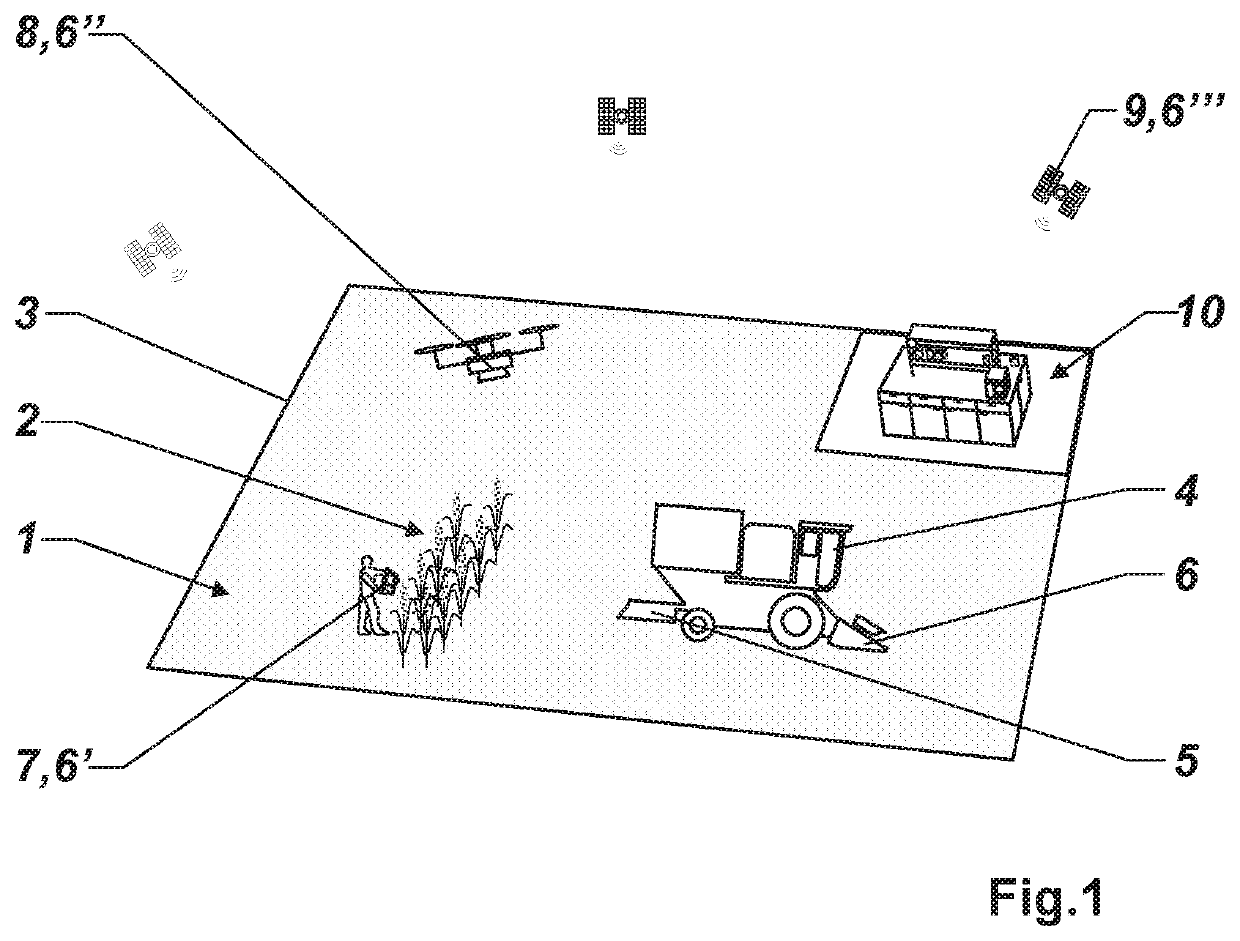Method for prediction of soil and/or plant condition
a plant condition and soil technology, applied in the field of precision agriculture, can solve the problems of insufficient automation of processes, high labor intensity, and increased labor intensity of labor-intensive tasks, and achieve the effects of reducing labor intensity, increasing labor intensity, and increasing labor intensity
- Summary
- Abstract
- Description
- Claims
- Application Information
AI Technical Summary
Benefits of technology
Problems solved by technology
Method used
Image
Examples
Embodiment Construction
[0068]FIG. 1 shows an exemplary illustration in the field of precision agriculture, wherein farming is based on an advanced combination of modern observing, measuring, and analysis techniques for optimizing harvesting and returns. Farmers are provided with a wealth of measurement data and information on soil 1 and / or plants 2 and thus an actual or predicted state of a cultivation parcel 3 and its products may be derived, enabling improved decision-making and a high degree of optimization.
[0069]For example, based on such an optimization model a “smart tractor”4 may be equipped with a dedicated action unit 5 for applying the right type and precise amount of fertilizer and / or e.g. water / pesticide, or e.g. an optimized seed planting pattern may be executed. The tractor 4 may further be equipped with a data acquisition unit 6 with dedicated sensors for remote sensing, e.g. a sensor for spectral measurements or imaging, e.g. infrared imaging or a sensor for deriving NDVI data, a sensor fo...
PUM
 Login to View More
Login to View More Abstract
Description
Claims
Application Information
 Login to View More
Login to View More - R&D
- Intellectual Property
- Life Sciences
- Materials
- Tech Scout
- Unparalleled Data Quality
- Higher Quality Content
- 60% Fewer Hallucinations
Browse by: Latest US Patents, China's latest patents, Technical Efficacy Thesaurus, Application Domain, Technology Topic, Popular Technical Reports.
© 2025 PatSnap. All rights reserved.Legal|Privacy policy|Modern Slavery Act Transparency Statement|Sitemap|About US| Contact US: help@patsnap.com



